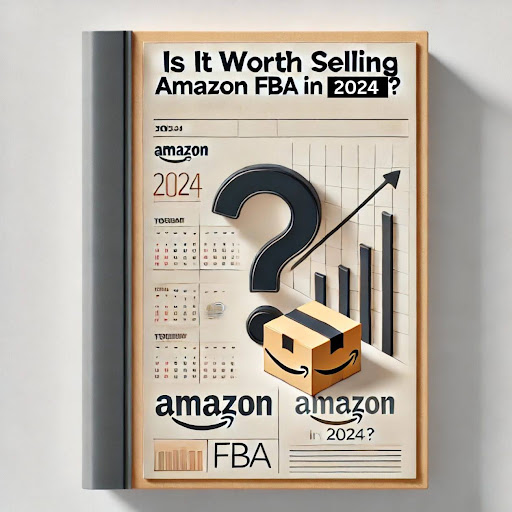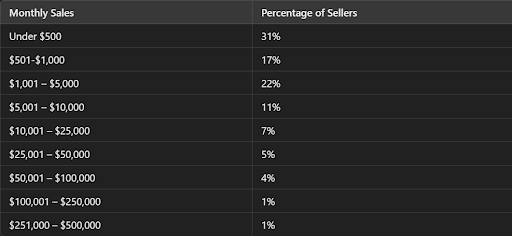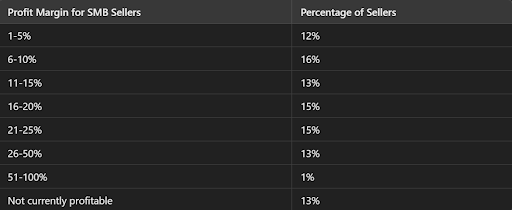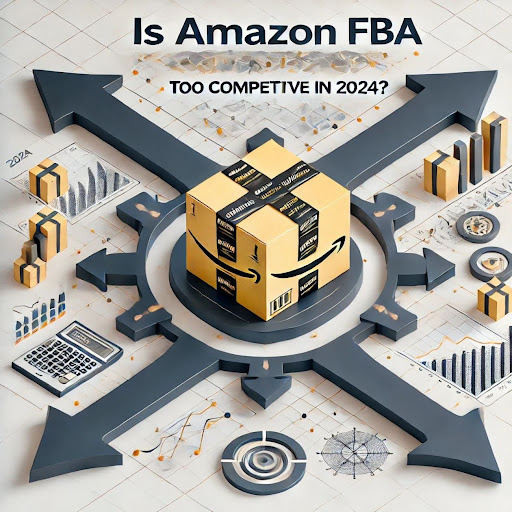Is It Worth Selling on Amazon FBA in 2024?

Is selling on Amazon worth it in 2024? In short: yes, it can be incredibly profitable for those who invest the time and effort. But let’s dive into the details to understand why.
In 2023, Amazon’s revenue reached an astonishing $574 billion, up from $514 billion in 2022. Of that revenue, nearly 23% is driven by third-party sellers. Out of those sellers, 82% use Fulfillment by Amazon (FBA) to manage their orders and logistics. While competition has increased on Amazon, so has the demand for online shopping — 51% of consumers now start their product searches on Amazon.
This article explores why selling on Amazon FBA is still a profitable venture in 2024 and what to expect as a seller.
Why Amazon FBA is Still Worth It in 2024
Despite growing competition, Amazon remains a marketplace brimming with opportunity. The sheer size of its customer base — with millions of shoppers visiting every day — makes it a lucrative platform for sellers. Amazon FBA provides sellers access to:
-
A Huge Customer Base: Amazon.com receives close to 3 billion visits per month, and with over 300 million Prime members, sellers using FBA can reach a global audience that trusts Amazon's brand and fast shipping.
-
Fulfillment Support: FBA is Amazon’s logistics arm that takes the hassle out of warehousing, shipping, and customer service. By utilizing Amazon's FBA, sellers send inventory to fulfillment centers, and Amazon handles the rest, including Prime shipping, which significantly boosts conversion rates.
-
Increased Trust from Shoppers: Products fulfilled through FBA are eligible for Amazon Prime, a highly attractive feature for buyers who value fast, reliable shipping. Here's more about FBA.
How Much Do Amazon Sellers Make in 2024?
One of the first questions new sellers ask is: How much do Amazon sellers actually make?
While results vary based on product type, strategy, and experience, here are some insights based on seller surveys:
-
40% of Amazon sellers earn anywhere from $1,000 to $25,000 in monthly revenue.
-
30% of sellers report monthly sales above $5,000.
-
31% of sellers, however, earn under $500 per month.

Is Selling on Amazon Profitable?
Revenue doesn’t always translate to profit. You might have impressive sales, but if your costs are too high, your net profit can shrink.
Compared to traditional brick-and-mortar businesses, Amazon sellers typically enjoy higher profit margins:
-
57% of sellers report profit margins greater than 10%.
-
28% of sellers enjoy margins above 20%.
-
30% of sellers have earned lifetime profits of over $50,000.

These statistics are encouraging, but it’s important to keep in mind that 13% of sellers have not yet turned a profit. If you're struggling with profitability, tools like Sales Analytics can help you track your financial health and make data-driven decisions to improve performance.
Pros of Selling on Amazon FBA
Selling on Amazon FBA offers numerous advantages, including:
-
Access to a Loyal Customer Base: Amazon’s vast reach allows small businesses to gain exposure without the need for extensive marketing.
-
Prime Shipping: Products that are fulfilled by Amazon automatically qualify for Prime shipping, giving them a competitive edge in the marketplace.
-
No Need for Inventory Management: With FBA, Amazon handles warehousing, shipping, and even customer service, leaving sellers to focus on scaling their businesses.
Cons of Selling on Amazon FBA
Despite its many perks, selling on Amazon comes with some downsides:
-
Storage Fees: If you use FBA, you’ll pay for storage in Amazon’s warehouses. Fees increase if your inventory is slow-moving or seasonal.
-
FBA Fees: On top of storage fees, FBA charges for packing and shipping items, which can reduce your profit margins. Here's a guide on how to reduce it!
-
Return Hassles: Amazon’s generous return policy may lead to higher return rates for some products, which can be challenging for sellers to manage.
How Much Does It Cost to Start Selling on Amazon?
Most Amazon sellers can get started with an upfront investment of around $5,000 or less. However, some sellers begin with as little as $500.
In addition to product costs, you’ll need to budget for:
-
Referral Fees: Typically, Amazon charges 15% of your product’s price as a referral fee.
-
FBA Fees: Fulfillment fees depend on the size and weight of your product.
-
FBA Storage Fees: Amazon charges by cubic feet, so larger items will incur higher fees.
-
Subscription Fees: A professional Amazon seller account costs $39.99 per month.
How Long Does It Take to Become Profitable?
For new sellers, profitability can come relatively quickly compared to traditional businesses. In fact, 22% of Amazon sellers report turning a profit within three months, and 58% within the first year.

It’s important to note that new sellers may need to invest in advertising and promotions, which can impact their early profits.
Is Amazon FBA Too Competitive in 2024?

Competition has indeed increased on Amazon, but with a growing customer base, there’s still plenty of opportunity for new sellers. With the right research and strategy, it's possible to carve out a niche and thrive.
Nearly 600,000 new sellers signed up to sell on Amazon last year. Despite the large number of new sellers, Amazon’s customer base is also expanding, giving everyone a piece of the pie.
Final Thoughts: Is Selling on Amazon FBA Worth It in 2024?
Yes, selling on Amazon FBA is still worth it in 2024. While the platform is competitive, its massive customer base, robust fulfillment system, and high potential for profit make it an attractive option for online sellers. However, success requires effort, consistent optimization, and a solid understanding of your costs and margins.
If you need personalized guidance or help fine-tuning your strategies, Superfuel AI can assist. Our AI-powered assistant analyzes 36+ key Amazon metrics to identify and address the root causes of sales fluctuations, helping you optimize your storefront and boost sales. Reach out to us at [email protected].
--
Ben Mathew, Amazon Expert
Ben Mathew is a co-founder at Superfuel, a sales assistant for Amazon sellers. In the past, Ben and his team of e-commerce specialists and software engineers have launched 40+ new brands on Amazon, taking them from zero to bestsellers. In his free time, he is either learning from other top sellers or encouraging his 3 daughters in their love for reading. He is reachable at ben [at] superfuel.io.
FAQs
How do I choose profitable products to sell on Amazon FBA?
- Conduct thorough market research to identify products with high demand, low competition, and good profit margins. Use tools like Amazon's Keyword Planner and Seller Central to analyze product trends and sales data.
What are some popular product categories that sell well on Amazon FBA?
- Electronics, home goods, beauty and personal care, health and wellness, and pet supplies are often popular categories. However, it's important to find a niche within these categories to differentiate your products.
How can I scale my Amazon FBA business?
- Increase your product inventory, expand into new product categories, optimize your listings, and leverage advertising and marketing strategies. Consider hiring additional staff or outsourcing tasks as your business grows.